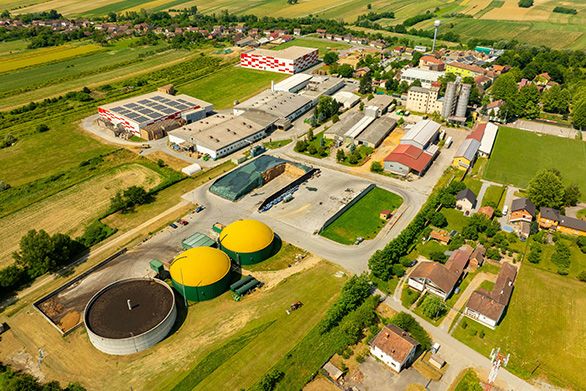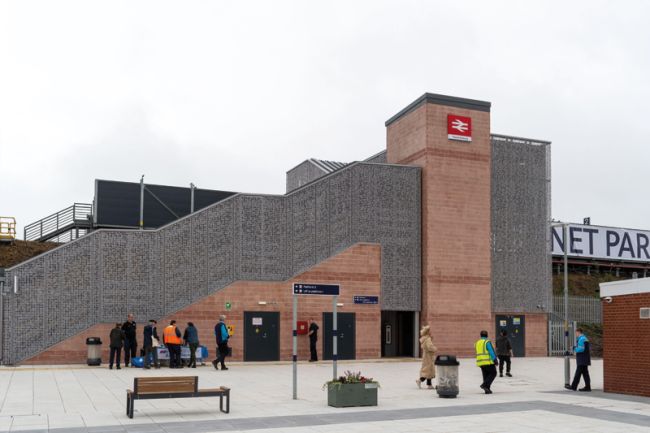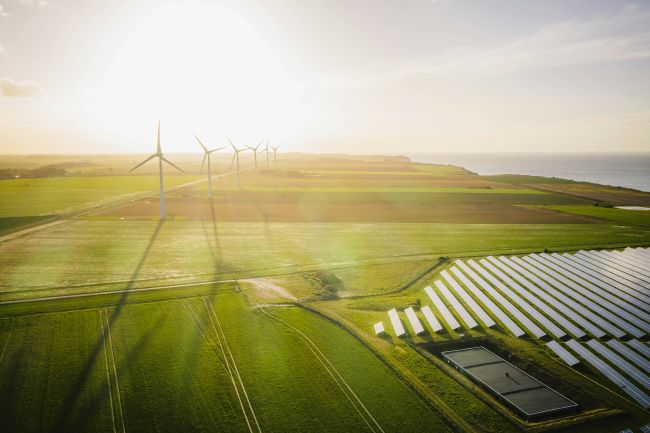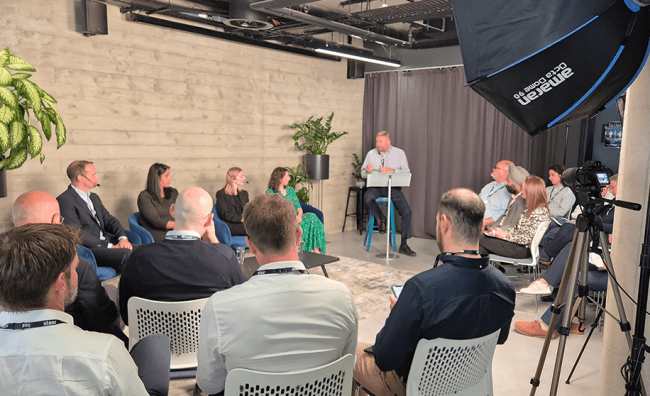The key to UK Net Zero is at the heart of local government
For five years now the UK’s Net Zero by 2050 target has been enshrined in law but how we reach that goal is up for debate.

For five years now, the UK’s Net Zero by 2050 target has been enshrined in law, but how we reach that goal is up for debate.
While the UK has a centralised political system, our energy transition is not necessarily suitable for a complete top-down reorganisation; the diversity of local areas in terms of economy, housing stock, transport and communities means that Net Zero may look extremely different from place to place.
The UK Government itself has identified that local authorities have influence over 45 key policy areas that could shape the pathway to Net Zero with the scope to impact 82% of UK emissions. Considering this, as well as a recommendation from the Climate Change Committee, the Government has adopted the ‘bottom-up’ approach of Local Area Energy Planning (LAEP) as a way to drive forward our sustainable future.
What Is LAEP?
LAEP is a whole system, data-driven approach that maps energy use across four main areas: building, transport, energy and local industry. Once a local authority has created an accurate picture of energy use, a data-based action plan must be agreed to by important local stakeholders like energy companies, industry leaders and community groups. This plan will include measures such as retrofitting homes, installing rooftop solar panels, EV charging infrastructure and ‘smart’ electricity systems.
In some cases, particularly in rural areas, LAEPs could also include measures on land use, agriculture, and the environment. Here, issues like decarbonising farming machinery, restoration of peatland and other habitats and protecting biodiversity including in marine environments will need to be considered.
In all cases, there is room for ‘soft’ measures like behaviour change in areas such as sustainable transport modes and recycling to accompany the ‘hard’ measures mentioned above.
Who are the ‘trailblazers’?
While LAEP is a relatively new concept to many, some local authorities have already completed the process. These authorities, known as ‘trailblazers’, are as far apart as Bury and Bridgend and include urban authorities like Newcastle and predominantly rural counties like Oxfordshire. Combined authorities representing several boroughs, York and North Yorkshire and Greater Manchester, have also produced LAEPs.
LAEPs allow areas to set their own Net Zero targets, which are in many cases before the official 2050 deadline. York and North Yorkshire has a deadline of 2034 while Greater Manchester’s is 2038. The plans are detailed and locally specific with staggered targets for pipelined work, Greater Manchester for example has targets to be met by 2027 that include connecting 8000 homes to low-carbon heat networks and producing 4.5 gigawatts of energy from rooftop solar panels.
Local Governance and LAEPs
To successfully implement LAEP it will be essential to understand the patchwork of local authorities and their decision-making structure in the UK, this will help to keep detailed Net Zero plans on track.
Prior to the devolution deals of the 2010s, there were two categories of local government in the UK: unitary and two-tier. Two-tier authorities see a county council, for example Nottinghamshire, responsible for the entire county while a district or borough council, for example Mansfield, is responsible for a smaller area. The two tiers have differing responsibilities, for example county councils are responsible for social care while district/borough councils are responsible for collecting council tax.
Alternatively, some areas (generally speaking cities or metropolitan boroughs in the case of Greater London) are Unitary authorities, for example Nottingham. Here, the Unitary Council is responsible for all the duties split between county and district/borough councils in the two-tier system.
Within this system there are also a number of different decision-making structures; a leader and cabinet model where a council leader appoints a cabinet member per policy area; a committee model which sees committees appointed to make decisions on certain areas; and an elected mayoral system in which an elected mayor proposes the policy framework and chairs the cabinet.
Since 2015 there has also been a new category, a combined authority, such as Greater Manchester and York and North Yorkshire mentioned above. To date there are 10 combined authorities all with a directly elected mayor. These structures see a number of councils grouped together to cooperate on policy including economic development and skills and training.
How the 45 policy areas affecting Net Zero that fall under the remit of local authorities operate differently under different structures needs to be understood in order to keep LAEPs on track once they have been formulated. Recycling is the responsibility of borough/district councils, but waste management overall is the responsibility of county councils, while combined authorities have huge powers of transport policy and strategic planning. Areas like energy, housing and local economy can all be affected differently depending on the types of authority and the structure of government.
The legislative landscape
Clearly, LAEPs intend to offer a pathway that possibly demands a shift in policy away from a centrally planned national power grid in favour of local smart grids powered by renewables, and a legislative framework is being developed that will either purposefully shape or otherwise affect authorities engaging in LAEP.
LAEP development requires extensive specialist contractors to cover areas from energy and retrofitting to habitat restoration. The Public Procurement Bill (PBB), currently going through UK Parliament, will create a simplified, centralised tool for projects being tendered by authorities worth over £2 million in a forward planning system of 18 months. Created with the aim of opening up procurement for small and medium enterprises (SMEs) and voluntary, community and social enterprises (VCSEs), the PPB contains a number of measures that will encourage innovation and new entrants from niche sectors to public sector contracting. Rules around pre-market engagement will encourage projects that involve research and development (useful for energy projects) and others will enable authorities to design their own procurement process that will help with searching for high-tech solutions.
Energy Regulator Ofgem is likewise working towards a way of regulating the new energy systems produced through LAEP. Tasked with creating an independent systems operator, Ofgem is planning to have the Future System Operator (FSO) running from summer 2024.
The FSO will be responsible for creating a Centralised Strategic Network Plan (CSNP) with the aim of providing long-term and connected planning on every type of renewables as well as natural gas and hydrogen. The CSNP will play a pivotal role in securing long-term Net Zero goals by having a 25-year view of project delivery, and will speed up investment decisions to prepare the grid for local networks, encompassing localised renewable generation.
The FSO will also be responsible for developing the Strategic Spatial Energy Plan (SSEP) that will ‘co-ordinate generation and transmission infrastructure in time and space,’ bringing down emissions and energy bills, providing certainty for industry to begin construction on infrastructure and ensure power generation meets demand forecast and Net Zero goals in the process. This will be achieved by engaging in systems-wide planning and speeding up connections to the grid, while providing an ‘economy-wide’ assessment of land use and energy generation.
Situated beneath the SSEP will be Regional Energy System Planners (RESPs), responsible for developing a regional system for ‘strategic planning at a distribution level’. LAEPs will be used by RESPs as part of a data feedback loop that, in tandem with CSNP should ensure regional parity for investment.
Plugging the skills gap
Meanwhile, as LAEPs will require a large number of skilled workers in areas in which there is currently a dearth, the Local Skills Improvement Plan (LSIP) is in place to fill the skills gap.
The design of LSIPs will be led by employer representative bodies in conjunction with further and higher education institutions, as well as others with responsibility for skill policy like combined authorities. LSIPs will specifically prepare post-16 education for the skills-gaps in their communities. LSIPs should provide a view from employers on what skills are most needed, set out actionable steps to provide them and show how these skills either directly or indirectly support meeting climate goals. Targets are to be set out for three years and then reviewed.
At the national level the UK government is using the Low Carbon Renewable Energy Economy Survey (LCREES) to audit skills shortages in the low-carbon and renewable energy sectors across the country. The survey is issued annually to selected, relevant businesses and their answers are used to inform policy on green job creation.

























